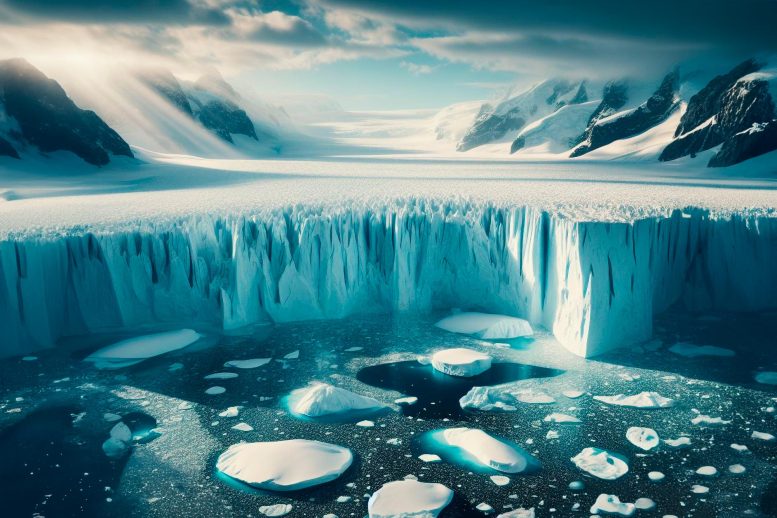
The British Antarctic Survey’s recent research suggests that the West Antarctic Ice Sheet’s melting rate will escalate this century, regardless of fossil fuel reductions. Simulations indicate that even with optimal global temperature control measures, melting could intensify threefold compared to the 20th century. This poses severe implications for global sea levels and coastal communities.
The West Antarctic Ice Sheet’s melting rate is projected to rise significantly this century, irrespective of fossil fuel cutbacks. While the future looks challenging, reducing fossil fuel reliance is still vital for adaptation and mitigation.
The West Antarctic Ice Sheet will continue to increase its rate of melting over the rest of the century, no matter how much we reduce fossil fuel use, according to British Antarctic Survey (BAS) research published this week in the journal Nature Climate Change. A substantial acceleration in ice melting likely cannot now be avoided, which implies that Antarctica’s contribution to sea level rise could increase rapidly over the coming decades.
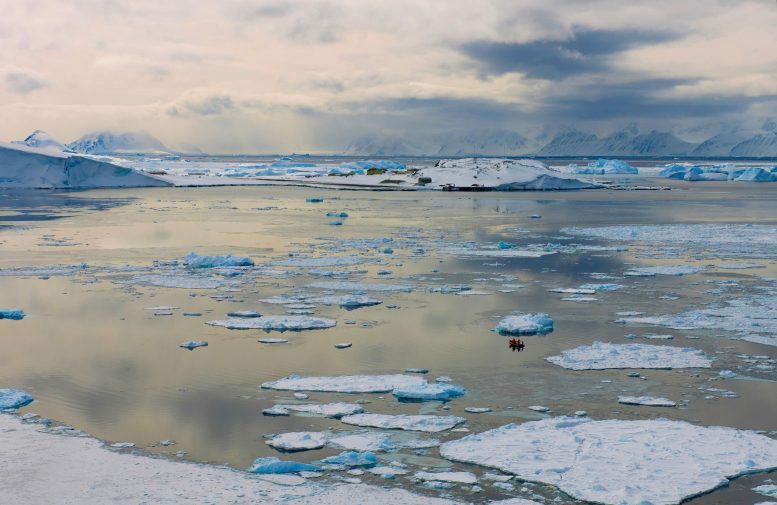
Credit: BAS
Scientists ran simulations on the UK’s national supercomputer to investigate ocean-driven melting of the West Antarctic Ice Sheet: how much is unavoidable and must be adapted to, and how much melting the international community still has control over through reduction of greenhouse gas emissions.
Taking into account climate variability like El Niño, they found no significant difference between mid-range emissions scenarios and the most ambitious targets of the 2015 Paris Agreement. Even under a best-case scenario of 1.5°C global temperature rise, melting will increase three times faster than during the 20th century.
The Broader Context and Its Implications
The West Antarctic Ice Sheet is losing ice and is Antarctica’s largest contributor to sea-level rise. Previous modeling finds this loss could be driven by warming of the Southern Ocean, particularly the Amundsen Sea region. Collectively the West Antarctic Ice Sheet contains enough ice to raise global mean sea level by up to five meters.
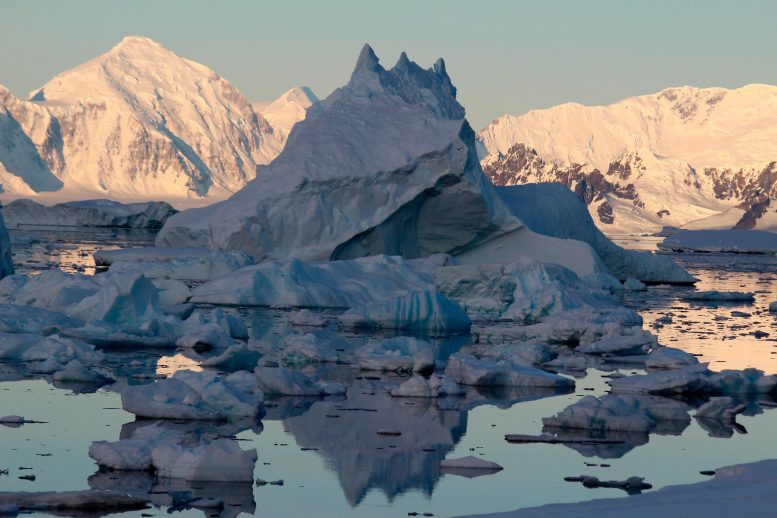
The West Antarctic Ice Sheet will continue to increase its rate of melting over the rest of the century, no matter how much we reduce fossil fuel use. Credit: BAS
Around the world, millions of people live near the coast and these communities will be greatly impacted by sea level rise. A better understanding of the future changes will allow policymakers to plan ahead and adapt more readily.
Expert Insights and Scenario Analysis
Lead author Dr. Kaitlin Naughten, a researcher at the British Antarctic Survey says: “It looks like we’ve lost control of melting of the West Antarctic Ice Sheet. If we wanted to preserve it in its historical state, we would have needed action on climate change decades ago. The bright side is that by recognizing this situation in advance, the world will have more time to adapt to the sea level rise that’s coming. If you need to abandon or substantially re-engineer a coastal region, having 50 years lead time is going to make all the difference.”
The team simulated four future scenarios of the 21st century, plus one historical scenario of the 20th century. The future scenarios either stabilized global temperature rise at the targets set out by the Paris Agreement, 1.5°C and 2°C, or followed standard scenarios for medium and high carbon emissions.
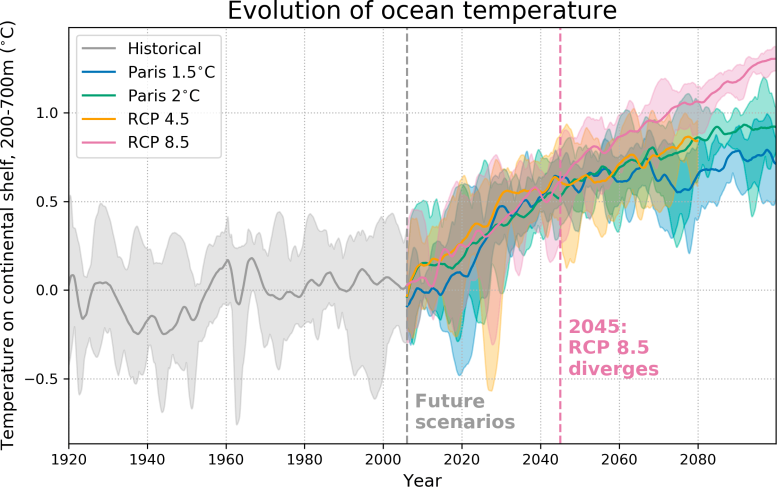
The team simulated four future scenarios of the 21st century, plus one historical scenario of the 20th century. Credit: BAS
All scenarios resulted in significant and widespread future warming of the Amundsen Sea and increased melting of its ice shelves. The three lower-range scenarios followed nearly identical pathways over the 21st century. Even under the best-case scenario, warming of the Amundsen Sea sped up by about a factor of three, and melting of the floating ice shelves which stabilized the inland glaciers followed, though it did begin to flatten by the end of the century.
The worst-case scenario had more ice shelf melting than the others, but only after 2045. The authors heed that this high fossil fuel scenario, where emissions increase rapidly, is considered unlikely to occur.
Conclusion and Call to Action
This study presents sobering future projections of Amundsen Sea ice-shelf melting but does not undermine the importance of mitigation in limiting the impacts of climate change.
Naughten cautions: “We must not stop working to reduce our dependence on fossil fuels. What we do now will help to slow the rate of sea level rise in the long term. The slower the sea level changes, the easier it will be for governments and society to adapt to, even if it can’t be stopped.”
Reference: “Unavoidable future increase in West Antarctic ice-shelf melting over the twenty-first century” by Kaitlin A. Naughten, Paul R. Holland and Jan De Rydt, 23 October 2023, Nature Climate Change.
DOI: 10.1038/s41558-023-01818-x




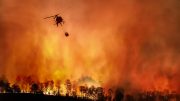




Lost control? Makes it seem like these fools thought we had control in the first place.
Earth is not static, its a living organism and will change continually.
Revenge is a dish best served cold. See you later NYC.
It is rather disturbing to me that geological time and the history of the planet is ignored and replaced by human lifespan time by people who write these articles. It was a mear twenty thousand years ago that the ice sheet began to melt. That process continues to this day. The huge Greenland ice sheet and the poles and mountain glaciers are the remnants and they will naturally melt until the cycle changes direction and we will once again have another ice age.
“A substantial acceleration in ice melting likely cannot now be avoided, which implies that Antarctica’s contribution to sea level rise could increase rapidly over the coming decades.”
I think it would be worthwhile for readers to also read the companion article on polar glaciers wherein they say, “…, in contrast with Greenland, total Antarctic surface melt has decreased by about 15 percent since 2000.” Now if these contradictory statements came with strong caveats and appropriate probabilities, I’d be more accepting.
https://scitechdaily.com/polar-contrasts-greenland-and-antarcticas-divergent-ice-melt-patterns/
“Previous modeling finds this loss could be driven by warming of the Southern Ocean, particularly the Amundsen Sea region.”
Most articles recently have been attributing the glacial melting to ‘warm’ water at the base of the floating glaciers. I find it strange that there is rarely any mention of there being at least 131 submarine and subglacial volcanoes in the West Antarctic Rift Valley. One should compare the geothermal gradient of West Antarctica with East Antarctic before assuming that the Amundson Sea warming is the result of anthropogenic CO2 forcing. Give us a reason why volcanic activity is being ignored!
There was a recent article that said the Antarctica is growing….while the Arctic is diminishing.
These are global trends, very likely. Looking back in history, these will happen: Earth’s magnetic pole is shifting… so will the climate.
Trump may be right. 🙂
Once the earth checks the population it will freeze over again, nothing it doesn’t do every ~115000 years or so. The real question is why a bunch of clowns wanted to destroy the perfect balance that was given to them so long ago. We still had a potential 10000 years at this rotation, such a waste.
My guess it’s a way to identify the guilty…
Oklo anyone
Did anyone notice that the ocean temperature chart in the article shows temperatures unchanged since 1920? Where do they get their forecast of rising temperatures given that there was no increase in temperature when greenhouse gas emissions were ramping up in the 20th century?
Once again, Spencer seeks to poison the science and public understanding, as do many others who seemingly think they are intelligent enough to post here. Ommission and conjecture and innuendo and straw arguments and irrelevant nonsense is not facts, it’s just deflection and rampant stupidity from the usual crowd of morons.
Antarctica is not only melting on the “surface” but also underneath. He doesn’t want you to know that. The non-moderation of comments spewing rampant stupidity here by Spencer and others has made this website factually worthless.
If you have specific complaints, list them, and provide citations showing my remarks to be wrong. They allow links here. That is how science is supposed to work; not anonymous insulting complaints without support.
Just to be clear, I value and respect science, being a scientist and former tenured associate professor of geology myself. One of the reasons I comment here is that I’m disappointed by the quality of much of the research, and dismayed at how easy it is to criticize it — often using their own words or contemporary research that comes to different conclusions. Often, my own questions or complaints are exactly what you accuse me of.
Three differences between us is that I DO provide facts in lieu of unsupported assertions and insults; I use my actual name here, unlike you, who uses a ‘handle’ intended to be an insult; and, I provide links to support most of the facts that aren’t self-evident and will gladly provide further support if asked politely.
I’ll let the readership decide whether they trust an anonymous whiner, or someone who puts things out that he is prepared to defend. I’m sorry that you don’t appreciate me calling things as I see them. Your best response is to demonstrate that I’m wrong.
Speaking of lying, you said, “Antarctica is not only melting on the ‘surface’ but also underneath. He doesn’t want you to know that.”
In my second comment above [11:46 am], I said, “Most articles recently have been attributing the glacial melting to ‘warm’ water at the base of the floating glaciers. I find it strange that there is rarely any mention of there being at least 131 [that should be 138] submarine and subglacial volcanoes in the West Antarctic Rift Valley.”
Will I get an apology or admission of lying from you? I doubt it. You are a good example of what is wrong with science today.